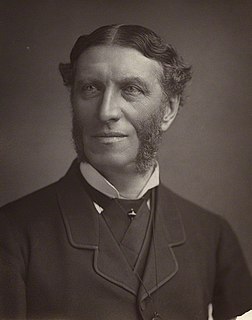 W
WMatthew Arnold was an English poet and cultural critic who worked as an inspector of schools. He was the son of Thomas Arnold, the celebrated headmaster of Rugby School, and brother to both Tom Arnold, literary professor, and William Delafield Arnold, novelist and colonial administrator. Matthew Arnold has been characterised as a sage writer, a type of writer who chastises and instructs the reader on contemporary social issues. He was also an inspector of schools for thirty-five years, and supported the concept of state-regulated secondary education. Arnold gave the term "Touchstone Method"
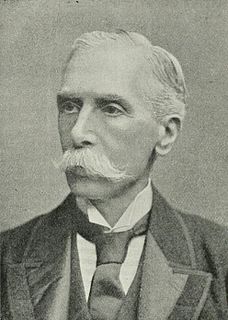 W
WAlfred Austin was an English poet who was appointed Poet Laureate in 1896, after an interval following the death of Tennyson, when the other candidates had either caused controversy or refused the honour. It was claimed that he was being rewarded for his support for the Conservative leader Lord Salisbury in the General Election of 1895. Austin's poems are little-remembered today, his most popular work being prose idylls celebrating nature.
 W
WMary Beaumont was the pseudonym of Rosa Oakes, a minor Victorian author.
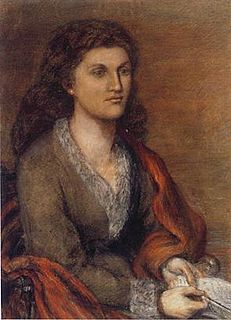 W
WMathilde Blind, was a German-born English poet, fiction writer, biographer, essayist and literary critic. In the early 1870s she emerged as a pioneering female aesthete in a mostly male community of artists and writers, and by the late 1880s she had become a prominent voice and leader among New Woman writers, including Vernon Lee, Amy Levy, Mona Caird, Olive Schreiner, Rosamund Marriott Watson, and Katharine Tynan. Her work was praised by Algernon Charles Swinburne, William Michael Rossetti, Amy Levy, Edith Nesbit, Arthur Symons and Arnold Bennett. Her widely discussed poem The Ascent of Man represents a distinctly feminist response to the Darwinian theory of evolution.
 W
WWilfrid Scawen Blunt, sometimes spelled Wilfred, was an English poet and writer. He and his wife, Lady Anne Blunt travelled in the Middle East and were instrumental in preserving the Arabian horse bloodlines through their farm, the Crabbet Arabian Stud. He was best known for his poetry, which was published in a collected edition in 1914, but also wrote a number of political essays and polemics. Blunt is also known for his views against imperialism, viewed as relatively enlightened for his time.
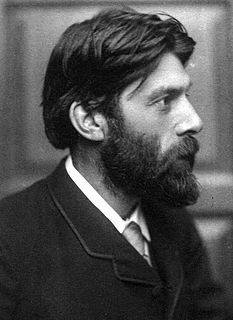 W
WRobert Seymour Bridges was Poet Laureate from 1913 to 1930. A doctor by training, he achieved literary fame only late in life. His poems reflect a deep Christian faith, and he is the author of many well-known hymns. It was through Bridges’ efforts that Gerard Manley Hopkins achieved posthumous fame.
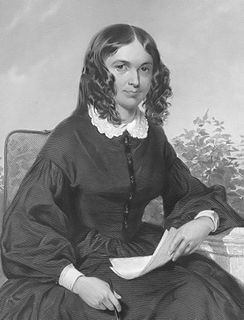 W
WElizabeth Barrett Browning was an English poet of the Victorian era, popular in Britain and the United States during her lifetime.
 W
WRobert Browning was an English poet and playwright whose dramatic monologues made him one of the foremost Victorian poets. His poems are noted for irony, characterisation, dark humour, social commentary, historical settings and challenging vocabulary and syntax. His career began well, but collapsed for a time. The long poems Pauline (1833) and Paracelsus (1835) were acclaimed, but in 1840 Sordello was seen as wilfully obscure. His renown took over a decade to recover, by which time he had moved from Shelleyan forms to a more personal style. In 1846 Browning married the older poet Elizabeth Barrett and went to live in Italy. By the time of her death in 1861 he had published the collection Men and Women (1855). His Dramatis Personae (1864) and book-length epic poem The Ring and the Book (1868-1869) made him a leading British poet. He continued to write prolifically, but his reputation today rests largely on his middle period. On his death in 1889, he was seen as a sage and philosopher-poet who had contributed to Victorian social and political discourse. Societies for studying work formed in his lifetime and subsisted in Britain and the United States into the 20th century.
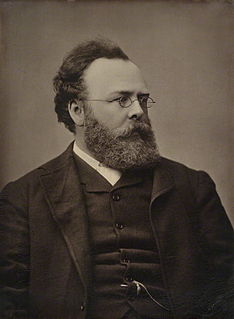 W
WRobert Williams Buchanan was a Scottish poet, novelist and dramatist.
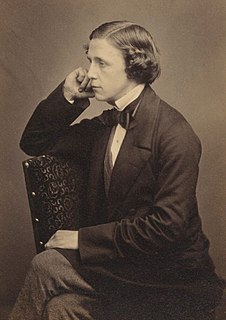 W
WCharles Lutwidge Dodgson, better known by his pen name Lewis Carroll, was an English writer of children's fiction, notably Alice's Adventures in Wonderland and its sequel Through the Looking-Glass. He was noted for his facility at word play, logic, and fantasy. The poems Jabberwocky and The Hunting of the Snark are classified in the genre of literary nonsense. He was also a mathematician, photographer, inventor and Anglican deacon.
 W
WSophia Frances Anne Caulfeild was a British writer and needleworker. She wrote about religion and needlework, and frequently worked with Blanche Catherine Saward.
 W
WJohn Clare was an English poet. The son of a farm labourer, he became known for his celebrations of the English countryside and sorrows at its disruption. His poetry underwent major re-evaluation in the late 20th century: he is now often seen as a major 19th-century poet. His biographer Jonathan Bate called Clare "the greatest labouring-class poet that England has ever produced. No one has ever written more powerfully of nature, of a rural childhood, and of the alienated and unstable self."
 W
WArthur Hugh Clough was an English poet, an educationalist, and the devoted assistant to Florence Nightingale. He was the brother of suffragist Anne Clough and father of Blanche Athena Clough who both became principals of Newnham College, Cambridge.
 W
WMary Elizabeth Coleridge was a British novelist and poet who also wrote essays and reviews. She wrote poetry under the pseudonym Anodos, taken from George MacDonald; other influences on her were Richard Watson Dixon and Christina Rossetti. Robert Bridges, the Poet Laureate, described her poems as 'wonderously beautiful… but mystical rather and enigmatic'.
 W
WAda Langworthy Collier was a 19th-century American author from Iowa. She wrote sketches, short stories, poems, and several novels. Collier is remembered for Lilith, The Legend of the First Woman (1885).
 W
WCaroline Fitzgerald was an American poet and litteratrice who spent most of her adult life in Europe, particularly Italy. Although not fabulously rich, she was wealthy enough to move to and fro between The Gilded Age in America and La Belle Époque in Europe. Inspired by Robert Browning's verse, she published a volume of poetry which was well received at the time but which eventually became almost forgotten. She married into the English aristocracy to Lord Edmond Fitzmaurice until she was able to get the marriage annulled after a few years.
Henry Buxton Forman was a Victorian-era bibliographer and antiquarian bookseller whose literary reputation is based on his bibliographies of Percy Shelley and John Keats. In 1934 he was revealed to have been in a conspiracy with Thomas James Wise (1859–1937) to purvey large quantities of forged first editions of Georgian and Victorian authors.
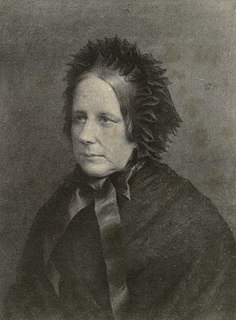 W
WLady Georgiana Fullerton was an English novelist, philanthropist, biographer, and school founder. She was born into a noble political family. She was one of the foremost Roman Catholic novelists writing in England during the nineteenth century.
 W
WSir William Schwenck Gilbert was an English dramatist, librettist, poet and illustrator best known for his collaboration with composer Arthur Sullivan, which produced fourteen comic operas. The most famous of these include H.M.S. Pinafore, The Pirates of Penzance and one of the most frequently performed works in the history of musical theatre, The Mikado. The popularity of these works was supported for over a century by year-round performances of them, in Britain and abroad, by the repertory company that Gilbert, Sullivan and their producer Richard D'Oyly Carte founded, the D'Oyly Carte Opera Company. These Savoy operas are still frequently performed in the English-speaking world and beyond.
 W
WThomas Hardy was an English novelist and poet. A Victorian realist in the tradition of George Eliot, he was influenced both in his novels and in his poetry by Romanticism, including the poetry of William Wordsworth. He was highly critical of much in Victorian society, especially on the declining status of rural people in Britain, such as those from his native South West England.
 W
WThomas Hood was an English poet, author and humorist, best known for poems such as "The Bridge of Sighs" and "The Song of the Shirt". Hood wrote regularly for The London Magazine, Athenaeum, and Punch. He later published a magazine largely consisting of his own works. Hood, never robust, had lapsed into invalidism by the age of 41 and died at the age of 45. William Michael Rossetti in 1903 called him "the finest English poet" between the generations of Shelley and Tennyson. Hood was the father of the playwright and humorist Tom Hood (1835–1874).
 W
WGerard Manley Hopkins was an English poet and Jesuit priest, whose posthumous fame established him among the leading Victorian poets. His manipulation of prosody – particularly his concept of sprung rhythm – established him as an innovative writer of verse, as did his technique of praising God through vivid use of imagery and nature. Only after his death did Robert Bridges begin to publish a few of Hopkins's mature poems in anthologies, hoping to prepare the way for wider acceptance of his style. By 1930 his work was recognised as one of the most original literary accomplishments of his century. It had a marked influence on such leading 20th-century poets as T. S. Eliot, Dylan Thomas, W. H. Auden, Stephen Spender and Cecil Day-Lewis.
 W
WAlfred Edward Housman, usually known as A. E. Housman, was an English classical scholar and poet, best known to the general public for his cycle of poems A Shropshire Lad. Lyrical and almost epigrammatic in form, the poems wistfully evoke the dooms and disappointments of youth in the English countryside. Their beauty, simplicity and distinctive imagery appealed strongly to Edwardian taste, and to many early 20th-century English composers both before and after the First World War. Through their song-settings, the poems became closely associated with that era, and with Shropshire itself.
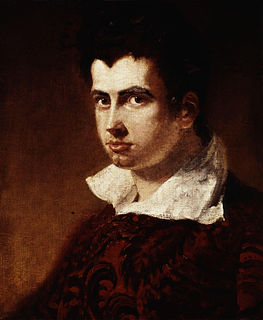 W
WJames Henry Leigh Hunt, best known as Leigh Hunt, was an English critic, essayist and poet.
 W
WJohn Richard Jefferies was an English nature writer, noted for his depiction of English rural life in essays, books of natural history, and novels. His childhood on a small Wiltshire farm had a great influence on him and provides the background to all his major works of fiction.
 W
WAndrew Lang was a Scottish poet, novelist, literary critic, and contributor to the field of anthropology. He is best known as a collector of folk and fairy tales. The Andrew Lang lectures at the University of St Andrews are named after him.
 W
WEdward Lear was an English artist, illustrator, musician, author and poet, now known mostly for his literary nonsense in poetry and prose and especially his limericks, a form he popularised. His principal areas of work as an artist were threefold: as a draughtsman employed to illustrate birds and animals; making coloured drawings during his journeys, which he reworked later, sometimes as plates for his travel books; as a (minor) illustrator of Alfred, Lord Tennyson's poems. As an author, he is known principally for his popular nonsense collections of poems, songs, short stories, botanical drawings, recipes and alphabets. He also composed and published twelve musical settings of Tennyson's poetry in poem.
 W
WThomas Babington Macaulay, 1st Baron Macaulay, FRS FRSE PC was a British historian and Whig politician. He wrote extensively as an essayist, on contemporary and historical sociopolitical subjects, and as a reviewer. His The History of England was a seminal and paradigmatic example of Whig historiography, and its literary style has remained an object of praise since its publication, including subsequent to the widespread condemnation of its historical contentions which became popular in the 20th century.
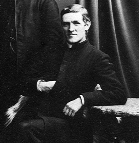 W
WFather Allan MacDonald was a Roman Catholic priest, poet, folklore collector, and activist from the Scottish Gàidhealtachd.
 W
WWilliam Topaz McGonagall was an Irish weaver, poet and actor who lived in Scotland. He won notoriety as an extremely bad poet who exhibited no recognition of, or concern for, his peers' opinions of his work.
 W
WCharlotte Mary Mew was an English poet whose work spans the eras of Victorian poetry and Modernism.
 W
WGeorge Mogridge was a prolific 19th century writer, poet and author of children's books and religious tracts. He is chiefly known by his pseudonym of 'Old Humphrey', under which name he published 46 works, but also used the pen-names 'Jeremy Jaunt', 'Ephraim Holding', 'Peter Parley' and 'Old Father Thames'. He wrote approximately 200 published works, many of which are still in publication today, and at the time of his death it was estimated that over 15 million copies of his writings were in circulation.
 W
WGeorge Augustus Moore was an Irish novelist, short-story writer, poet, art critic, memoirist and dramatist. Moore came from a Roman Catholic landed family who lived at Moore Hall in Carra, County Mayo. He originally wanted to be a painter, and studied art in Paris during the 1870s. There, he befriended many of the leading French artists and writers of the day.
 W
WWilliam Morris was a British textile designer, poet, novelist, translator, and socialist activist associated with the British Arts and Crafts Movement. He was a major contributor to the revival of traditional British textile arts and methods of production. His literary contributions helped to establish the modern fantasy genre, while he helped win acceptance of socialism in fin de siècle Great Britain.
 W
WSir Henry John Newbolt, CH was an English poet, novelist and historian. He also had a very powerful role as a government adviser, particularly on Irish issues and with regard to the study of English in England. He is perhaps best remembered for his poems "Vitaï Lampada" and "Drake's Drum".
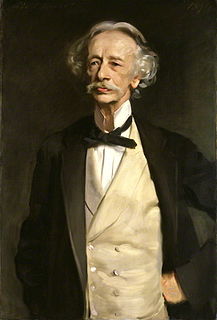 W
WCoventry Kersey Dighton Patmore was an English poet and critic best known for The Angel in the House, his narrative poem about the Victorian ideal of a happy marriage.
 W
WDorothy Peel (1782–1857), known as Dolly, was a famous character in Victorian South Shields, England, who acquired local legendary status. She is commemorated by a statue in the centre of the town.
 W
WChristina Georgina Rossetti was an English poet who wrote romantic, devotional, and children's poems. "Goblin Market" and "Remember" remain famous. She also wrote the words of two Christmas carols well known in the UK: "In the Bleak Midwinter", later set by Gustav Holst and by Harold Darke, and "Love Came Down at Christmas", also set by Darke and by other composers. She was a sister of the artist and poet Dante Gabriel Rossetti and features in several of his paintings.
 W
WGabriel Charles Dante Rossetti, generally known as Dante Gabriel Rossetti, was an English poet, illustrator, painter and translator, and member of the Rossetti family. He founded the Pre-Raphaelite Brotherhood in 1848 with William Holman Hunt and John Everett Millais. Rossetti was later to be the main inspiration for a second generation of artists and writers influenced by the movement, most notably William Morris and Edward Burne-Jones. His work also influenced the European Symbolists and was a major precursor of the Aesthetic movement.
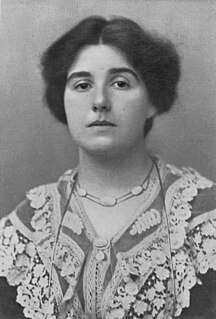 W
WPaulina Ruth "Nina" Salaman (née Davis) was a British Jewish poet, translator, and social activist. She is best known for her English translations of medieval Hebrew poetry, especially of the poems of Judah Halevi.
 W
WElizabeth Eleanor Siddall, styled and commonly known as Lizzie, was an English artist, poet, and artists' model. Siddall was an important and influential artist and poet. Significant collections of her artworks can be found at Wightwick Manor and the Ashmolean. Siddall was painted and drawn extensively by artists of the Pre-Raphaelite Brotherhood, including Walter Deverell, William Holman Hunt, John Everett Millais, and her husband, Dante Gabriel Rossetti.
 W
WAlgernon Charles Swinburne was an English poet, playwright, novelist, and critic. He wrote several novels and collections of poetry such as Poems and Ballads, and contributed to the famous Eleventh Edition of the Encyclopædia Britannica.
 W
WAlfred Tennyson, 1st Baron Tennyson was a British poet. He was the Poet Laureate during much of Queen Victoria's reign and remains one of the most popular British poets. In 1829, Tennyson was awarded the Chancellor's Gold Medal at Cambridge for one of his first pieces, "Timbuktu". He published his first solo collection of poems, Poems Chiefly Lyrical in 1830. "Claribel" and "Mariana", which remain some of Tennyson's most celebrated poems, were included in this volume. Although decried by some critics as overly sentimental, his verse soon proved popular and brought Tennyson to the attention of well-known writers of the day, including Samuel Taylor Coleridge. Tennyson's early poetry, with its medievalism and powerful visual imagery, was a major influence on the Pre-Raphaelite Brotherhood.
 W
WJames Thomson, who wrote under the pseudonym Bysshe Vanolis, was a Scottish Victorian era poet famous primarily for the long poem The City of Dreadful Night (1874), an expression of bleak pessimism in a dehumanized, uncaring urban environment. Thomson's pseudonym derives from the names of the poets Percy Bysshe Shelley and Novalis. He is often distinguished from the earlier Scottish poet James Thomson by the letters B.V. after his name.
 W
WRichard Horatio Edgar Wallace was an English writer.
 W
WOscar Fingal O'Flahertie Wills Wilde was an Irish poet and playwright. After writing in different forms throughout the 1880s, the early 1890s saw him become one of the most popular playwrights in London. He is best remembered for his epigrams and plays, his novel The Picture of Dorian Gray, and the circumstances of his criminal conviction for gross indecency for consensual homosexual acts, imprisonment, and early death at age 46.
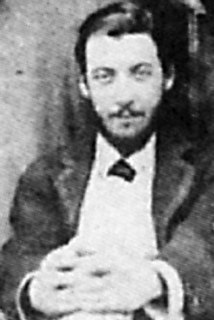 W
WWilliam Charles Kingsbury Wilde was an Irish journalist and poet of the Victorian era and the older brother of Oscar Wilde.
 W
WThomas Woolner was an English sculptor and poet who was one of the founder-members of the Pre-Raphaelite Brotherhood. He was the only sculptor among the original members.